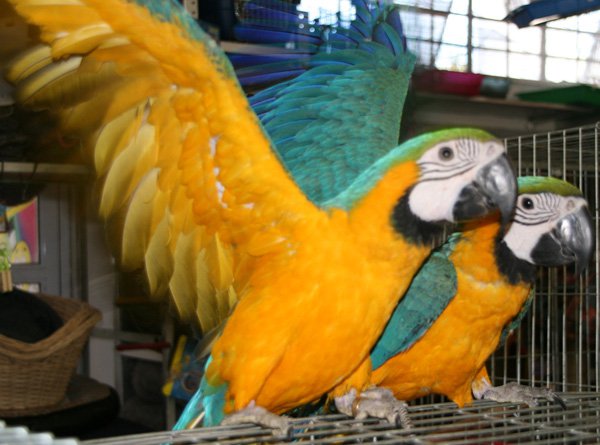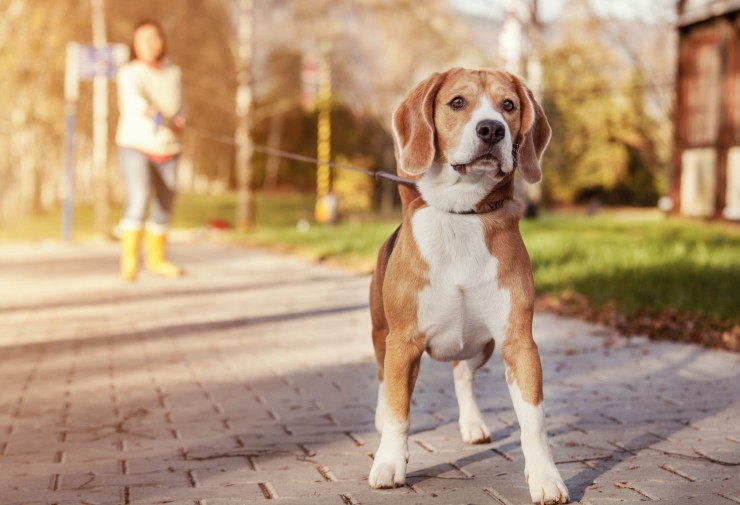
Flatulence refers to the anal passage of intestinal gas. It is
also known by many other names, including “farting,” “passing
wind,” and “passing gas.” Flatulence more commonly affects dogs
than cats and is most often observed in inactive dogs that spend
long periods indoors.
It is normal for dogs to pass gas in small quantities at
infrequent intervals. However, persistent passage of excessive
quantities of gas is abnormal. Excessive flatulence usually
results from intolerance of one or more components of the pet’s
diet.
This intolerance is most often due to the feeding of a diet of
inferior quality containing ingredients of poor digestibility.
These ingredients pass through the intestinal tract without
being absorbed and end up in the large intestine (colon and
rectum), where bacteria ferment them to produce gas.
Some of these gases do not smell, whereas others, particularly
those derived from the fermentation of proteins and fats, smell
badly. Flatulence can also occur when a dog eats excessive
quantities of food, overwhelming the ability of its
gastrointestinal tract to digest the food.
Furthermore, some dogs are born without the ability to digest
certain ingredients in their diets. For example, many dogs (and
cats) have difficulty digesting lactose in milk. Other dogs have
trouble digesting some legumes such as soy.
Fortunately, flatulence resulting from legumes can be
successfully reduced by a variety of manufacturing techniques.
Another cause of flatulence is greedy eating resulting in the
ingestion of large quantities of air. Once ingested, air has to
be removed from the gastrointestinal tract either by burping or
by flatulence.
Although flatulence is usually normal, on occasion it can herald
more serious gastrointestinal disease, particularly of the small
bowel or pancreas. You should seek veterinary advice if the
measures listed below fail to control flatulence, if gaseousness
appears to be causing your pet abdominal discomfort, or if the
flatulence is associated with concurrent vomiting or diarrhea.
All of these signs suggest more serious gastrointestinal disease.
The management of flatulence begins with a change to a
high-quality (highly digestible) diet without excessive fat
content. Suitable commercial products are available from most of
the major manufacturers.
Alternatively, owners can prepare a homemade diet composed of
highly digestible protein and carbohydrate sources such as
cottage cheese and rice appropriately balanced with vitamins and
minerals.
Homemade diets are less desirable than commercial diets because
their long-term use is often associated with nutritional
deficiencies or excesses.
Ensuring regular exercise is also helpful because it promotes
regular defecation. Reducing the dog’s gulping of air by
avoiding situations that provoke nervousness and by discouraging
greedy eating, for instance, by ensuring that the dog does not
have to compete for food, may also be helpful.
In the rare event that dietary manipulation is not successful in
controlling flatulence, call your veterinarian, because a
diagnostic investigation of your pet’s digestive system may be
required.
Alternatively, your veterinarian may suggest a trial with
medications that reduce gas production by assisting digestion,
absorbing gas, or assisting the passage of gas.
The above is general veterinary information. Do not begin
any course of treatment without consulting your regular
veterinarian. All animals should be examined at least once every
12 months.
 Do You Know How To Clear Cloudy Aquarium Water The Easy Way?
Do You Know How To Clear Cloudy Aquarium Water The Easy Wa
Do You Know How To Clear Cloudy Aquarium Water The Easy Way?
Do You Know How To Clear Cloudy Aquarium Water The Easy Wa
 Is Chocolate Toxic To Cats?
Is Chocolate Toxi
Is Chocolate Toxic To Cats?
Is Chocolate Toxi
 Five Big Training And Handling Mistakes Often Made By Dog Owners
Five Big Training
Five Big Training And Handling Mistakes Often Made By Dog Owners
Five Big Training
 Cats And Vomiting - Why Is Your Cat Throwing Up?
Cats And Vomiting
Cats And Vomiting - Why Is Your Cat Throwing Up?
Cats And Vomiting
 6 Health Issues To Watch For In Young Kittens
6 Health Issues T
6 Health Issues To Watch For In Young Kittens
6 Health Issues T
Copyright © 2005-2016 Pet Information All Rights Reserved
Contact us: www162date@outlook.com